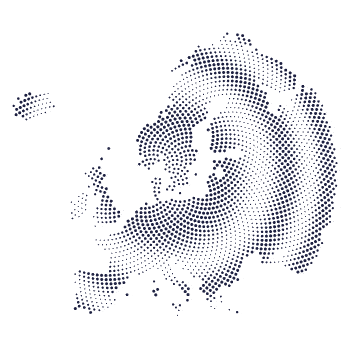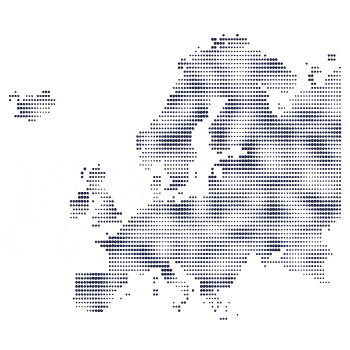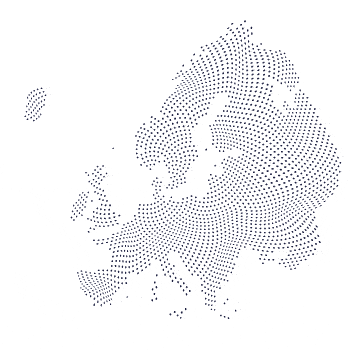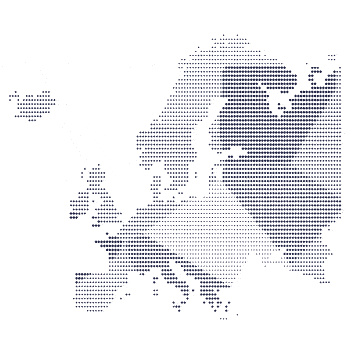The End
Close
Status Quo
1
1) Source: Press articles, Roland Berger
1) Source: Press articles, Roland Berger
Events that shaped the 2020 internet economy
January 2020
Jan 1
The California Consumer Privacy Act goes into action, giving residents unprecedented data control rights
Jan 20
Vietnam’s biggest mobile company to roll out 5G services
Feb 10
European VC's stellar decade brought up 40 European unicorns
Feb 19
The European Commission unveils its strategies for data and human centric Artificial
Mar 20
YouTube and Amazon Prime sacrifice streaming quality to relieve European networks due to high demand during coronavirus pandemic
Mar 31
Dutch tech companies start ‘Tech against Corona’ initiative
Apr 7
Germany launches smartwatch app to monitor coronavirus spread
Apr 8
Europe’s tech companies announce nearly USD 500 million in deals
Apr 20
European Commission launches COVID-19 data platform to enable rapid collection and sharing of research data
May 16
Facebook announces plan to build a 23,000 mile undersea cable to bring internet to Africa
May 18
Commissioner Breton debates Facebook CEO Zuckerberg and stresses Europe's digital values
Jun 16
Germany rolls out COVID-19 contract-tracing app to fight second wave
Jun 16
Qualcomm launches new Snapdragon 690 processor to add 5G to budget phones
Jun 19
Google launches possible Pinterest rival named "Keen" that uses machine learning to curate topics
Jun 19
Germany tightens online hate speech rules requiring platforms to send suspected content directly to the Federal police
Jun 22
Virgin Galactic will organize private passenger trips to the space station for NASA
Jul 1
Commission presents European Skills Agenda for sustainable competitiveness, social fairness and resilience
Jul 9
Huawei warns ban would cause ‘huge damage’ to UK digital economy
Jul 14
Huawei 5G kit must be removed from UK by 2027
Jul 17
Cloudflare DNS goes down, taking a large piece of the internet with it
Jul 21
Apple commits to be 100 percent carbon-neutral regarding its supply chain and products by 2030
Jul 23
US hatches plan to build a quantum Internet that might be unhackable
Aug 5
Trump issues executive orders that will effectively ban TikTok and WeChat
Aug 6
Singapore, Australia formalize digital economy pact
Aug 10
SpaceX is manufacturing 120 Starlink internet satellites per month
Aug 18
Tesla and Apple set stock splits to lower share prices — then their stocks rally
Aug 26
Facebook says Apple’s new iPhone update will disrupt online advertising
Sep 1
Apple and Google to make it easier to opt in to virus tracing
Sep 2
Apple, Google and Amazon respond to European tech taxes by raising prices
Sep 2
Amazon, Microsoft and Allianz among corporate founders of new climate-risk-focused data initiative
Sep 2
Microsoft launches a deepfake detector tool ahead of US election
Sep 3
Tech IPOs are booming everywhere but in Europe this year
Sep 9
German cabinet takes aim at Big Tech’s internet presence
Sep 24
Thailand takes first legal action against Facebook, Twitter over content
Sep 30
Brussels drafts rules to force Big Tech to share data
Oct 8
Report: More than 100,000 low-income California college students lack internet access
Oct 18
China concludes pilot project for a central bank-backed digital yuan
Oct 21
US government sues Google
Oct 23
An EU-funded project creates an open source technology stack for business-to-business (B2B) supply chain platforms that can interoperate with one another.
Oct 24
After Jack Ma, co-founder of Alibaba, criticizes Chinese regulators, he disappears for nearly three months
Nov 11
World Economic Forum calls blockchain key to sustainable digital finance
Nov 25
France orders tech giants to pay digital tax
Dec 1
Indonesia considers digital tax even without world consensus
Dec 15
The EU presents the first proposal of Digital Services Act and Digital Markets Act
Dec 16
China releases anti-monopoly guidelines for its platform economy
Dec 23
With Alibaba investigation, China gets tougher on tech
December 2020
Regulation-related
Business-related
2
1) Current prices, tech-sector comprises NACE codes J62 and J63 / Europe = EU27 and UK, Norway, Switzerland
2) Source: Eurostat, Roland Berger
3
1) Current prices, tech-sector comprises NAICS codes 518, 519 and 5415
2) Source: United States Bureau of Economic Analysis, Roland Berger
4
1) Tech employees comprise all employees in business sectors J62 and J63 (NACE) / Europe = EU27 and UK, Norway and Switzerland
2) Source: Eurostat, Roland Berger
5
1) Tech employees comprise all employees in business sectors 5415, 518 and 519 (NAICS); non-tech employees include only non-farm labor
2) Source: United States Bureau of Economic Analysis, Daxx.com, OECD, Roland Berger
6
1) Top 100 publicly listed companies in Europe by revenues, with internet companies being defined as sectors "Application Software", "E-Commerce Discretionary", "Infrastructure Software", "Internet Based Services", "Internet Media"
2) Source: Bloomberg, Roland Berger
7
1) Top 100 publicly listed companies in the US by revenues, with internet companies being defined as sectors "Application Software", "E-Commerce Discretionary", "Infrastructure Software", "Internet Based Services", "Internet Media"
2) Source: Bloomberg, Roland Berger
01
Key Takeaway
1
1) Europe = Western, Central and Eastern Europe
2) Source: Ericsson, GSMA, Roland Berger
2
1) Source: OECD, Roland Berger
3
1) Source: GSMA, Roland Berger
04
Key Takeaway
5
Light blue lines show what happens to data that originate outside of France and that are routed through France on their way back to their domestic country:
Dark blue lines indicate what happens to data that originate in France and are routed to a French destination:
1) Source: Oracle
6
1) Geographical country codes and locations are defined by ISO-3166-alpha2 spec. IP address geolocation is based upon MaxMind data and proprietary internal algorithms
2) Source: Oracle
7
1) Geographical country codes and locations are defined by ISO-3166-alpha2 spec. IP address geolocation is based upon MaxMind data and proprietary internal algorithms
2) Source: Oracle
8
1) Source: Oracle
9
1) Source: Oracle
10
Key Takeaway
11
1) Source: Gartner, Roland Berger
12
1) Source: Gartner, Roland Berger
02
Key Takeaway
1
1) Audio-visual technology, digital communication, computer technology, IT methods for management
2) Source: World Intellectual Property Organization, Roland Berger
2
1) Source: Bloomberg, Roland Berger
3
03
Key Takeaway
1
1) Regions correspond to NUTS2 (for London, several NUTS2-levels have been merged for reasons of clarity), tech workers are employees in knowledge-intensive high-technology services as defined by NACE codes 59-63 and 72
2) Source: Eurostat, Roland Berger
2
1) Greater London Area comprises several cities, thus three universities are listed
2) Universities in Madrid and Bucharest are not ranked as top universities by THE, therefore no rank is displayed
3) Source: Dealroom, THE, Roland Berger
3
1) Source: Index Ventures, Roland Berger
04
Key Takeaway
1
1) Source: Invest Europe, Roland Berger
2
1) Source: Invest Europe, Roland Berger
3
1) Source: Moneytree Report, CB Insights, Roland Berger
4
1) Source: PitchBook, Roland Berger
5
1) Source: Dealroom, Roland Berger
06
Key Takeaway
1
1) Source: Statcounter, Roland Berger
2
1) Source: Statcounter, Roland Berger
3
1) Source: Statista, Roland Berger
4
1) Source: Statista, Roland Berger
5
1) Source: Bond Internet Trends 2019, Roland Berger
6
1) Source: eMarketer, Roland Berger
7
1) Source: Bloomberg, Roland Berger
8
1) Source: Bloomberg, Roland Berger
9
1) Source: Bloomberg, Roland Berger
10
Key Takeaway
1
Private 5G: Ultra low latency and incredibly high bandwidth connections supporting AI-driven applications serving an exploding number of sensors and endpoints
Digital Twin: Virtual replicas of physical devices that data scientists and IT pros can use to run simulations before actual devices are deployed
Multiexperience: Permutations of modalities (e.g., touch, voice and gesture), devices and apps that users interact with on their digital journey
Embedded AI: The use of machine and deep learning inside a software platform
Social Distancing Technologies: Designed to warn people when they get too close to each other, typically relying on communications that travel short distances
1) Source: Gartner, Roland Berger
Gartner Hype Cycle for emerging technologies, 2019
1
What impact will the spread of COVID-19 have on the global economy?
Higher demand for selected digital services (e.g. digital workplace, food delivery, ecommerce)
Smartphone sales and travel & tourism services will be negatively impacted
Will negotiations between UK and EU produce a viable trade agreement?
No-deal-scenario might negatively impact the European startup ecosystem as London and Oxford are important hubs
Who will win this year's US presidential election?
Trump presidency might fuel debate on digital tax and further fan the digital Cold War between the US and China
What will the forthcoming Digital Services Act to be proposed by the European Commission in Q4 2020 look like?
Tighter liability for digital platforms may help to decrease digital disinformation while posing a potential risk for freedom of speech and digital innovation
Will the rollout of 5G technology be subject to further political regulation regarding technology suppliers?
Restrictions regarding the choice of technology suppliers might delay the rollout of 5G
Will the European Commission pursue further antitrust cases against digital platforms?
1
Policy makers should both demand and enable a quick rollout of 5G across Europe to support new business models
Such a policy framework should encourage the use of technologies like virtualized and open radio access networks that establish new opportunities for European suppliers and reduce dependence on single suppliers
European regulators should push for a further opening of (mobile) telecommunications markets across Europe

Policy makers should both demand and enable a quick rollout of 5G across Europe to support new business models
Such a policy framework should encourage the use of technologies like virtualized and open radio access networks that establish new opportunities for European suppliers and reduce dependence on single suppliers
European regulators should push for a further opening of (mobile) telecommunications markets across Europe
2
European governments should closely align their cloud strategies and strengthen the European cloud ecosystem
The market offers a wide variety of cloud computing services and technical solutions – clients should clearly define their mission to find the right service provider
Data portability and interoperability between cloud service providers should only be regulated by statutory provisions if the codes of conduct developed as part of the stakeholders' self-regulation prove to be ineffective

European governments should closely align their cloud strategies and strengthen the European cloud ecosystem
The market offers a wide variety of cloud computing services and technical solutions – clients should clearly define their mission to find the right service provider
Data portability and interoperability between cloud service providers should only be regulated by statutory provisions if the codes of conduct developed as part of the stakeholders' self-regulation prove to be ineffective
3
The European Commission should aim to create a European Single Startup Market by striving for a single legal framework for startups across the continent
The European Startup Nation Standard should be advanced through a European directive that – among others – makes it easier and more attractive to grant employee stock options
Both the EU and its member states must continue to increase their investment in basic research to spark the creation of further innovation ecosystems across the continent

The European Commission should aim to create a European Single Startup Market by striving for a single legal framework for startups across the continent
The European Startup Nation Standard should be advanced through a European directive that – among others – makes it easier and more attractive to grant employee stock options
Both the EU and its member states must continue to increase their investment in basic research to spark the creation of further innovation ecosystems across the continent
4
European governments should follow the European Investment Fund's example and set up fund-of-funds to lessen the risk for investors and mobilize private capital
Government authorities across Europe should set up dedicated later stage venture capital funds and use public funds to leverage private capital
The European Commission should revive and finalize the Capital Markets Union to align legal frameworks regarding venture capital

European governments should follow the European Investment Fund's example and set up fund-of-funds to lessen the risk for investors and mobilize private capital
Government authorities across Europe should set up dedicated later stage venture capital funds and use public funds to leverage private capital
The European Commission should revive and finalize the Capital Markets Union to align legal frameworks regarding venture capital
5
Improve data portability by enabling customers to transfer all data of personal value to another platform
Rigorously unbundle vertical services among dominant platforms to increase freedom of choice for consumers
Ensure platform neutrality and guarantee access to important points of access to digital infrastructures without discrimination

Improve data portability by enabling customers to transfer all data of personal value to another platform
Rigorously unbundle vertical services among dominant platforms to increase freedom of choice for consumers
Ensure platform neutrality and guarantee access to important points of access to digital infrastructures without discrimination
The End
